So many questions about the process and details on what we used to strip and treat those antique pieces that were infested with beetles. So today- it is all about answering your questions.
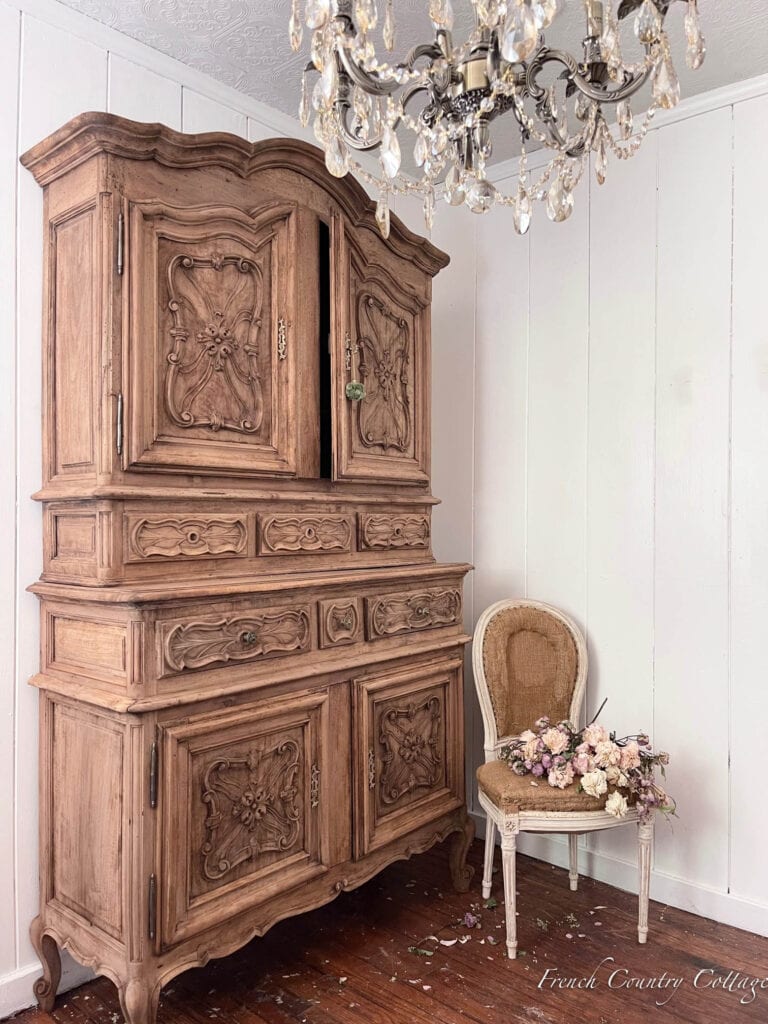
Where did you find these pieces?
I saw a listing on Facebook Marketplace. They were a couple hours round trip drive from us- but looked promising.
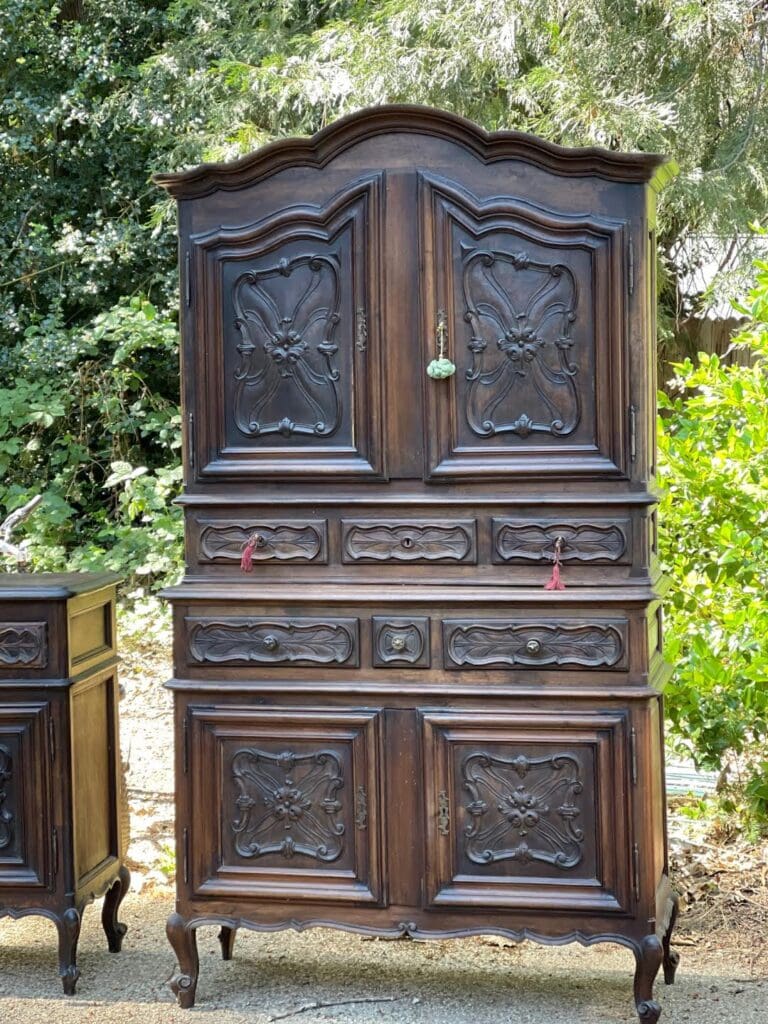
Why did you buy the pieces if they had beetles?
Number one- the price was amazing (Free!) but of course, I knew there had to be a reason they were Free. I couldn’t see a close up on anything in the ad- and the seller didn’t share any additional photos. It came down to taking a chance that the pieces would be good in person.
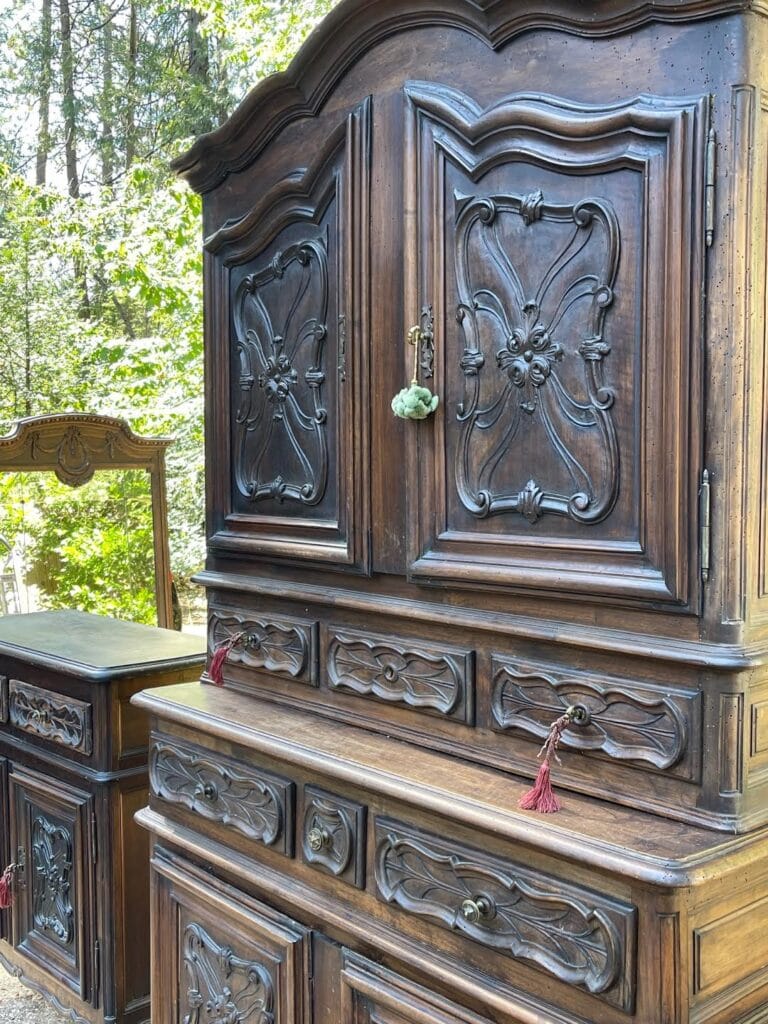
How did you know they had beetles?
They were covered in tiny holes- evidence of old beetle activity (and new activity). My son messaged me while they were there loading the pieces up and said they were covered in bug holes- and that they gave us an extra piece they were going to take to the dump. So, we knew then- it might be a problem but were hoping it was old damage and the pieces had already been treated. When we saw new sawdust and tracks- we started to get worried so we treated the pieces again.
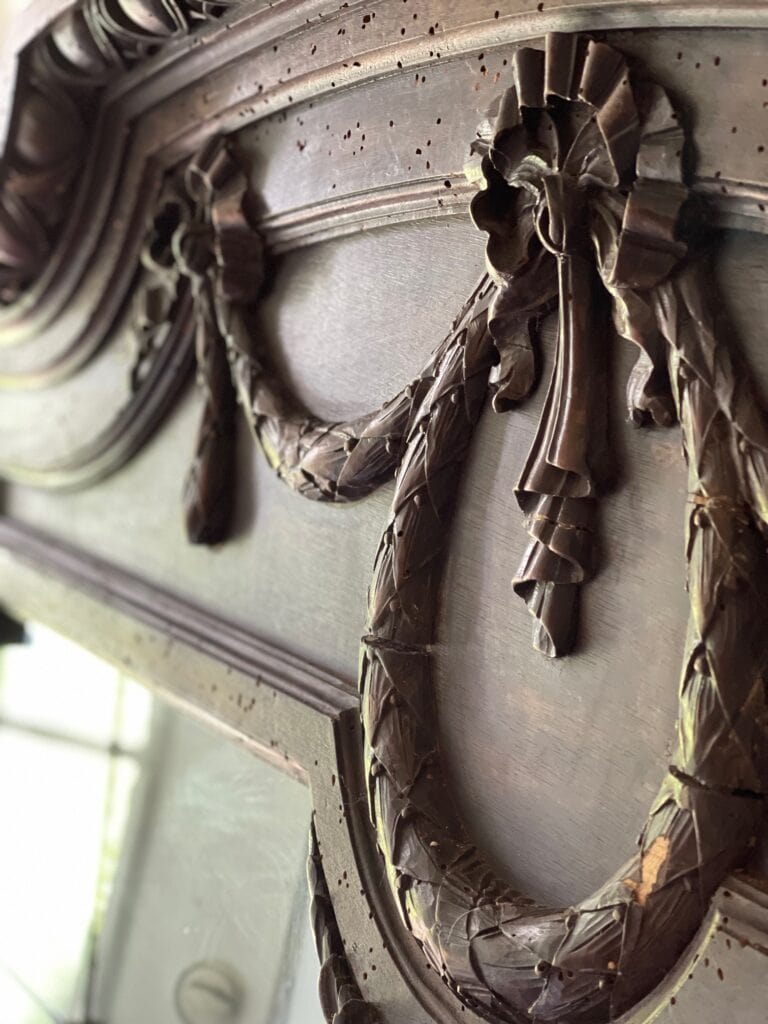
What did you use to get rid of the beetles?
The first round was an insecticide that was available at the hardware store. But- it didn’t work. I saw a wee beetle pop out of the wood while I was looking for any activity, So we then ordered a more expensive product for a heavier infestation – it is called Bora Care.
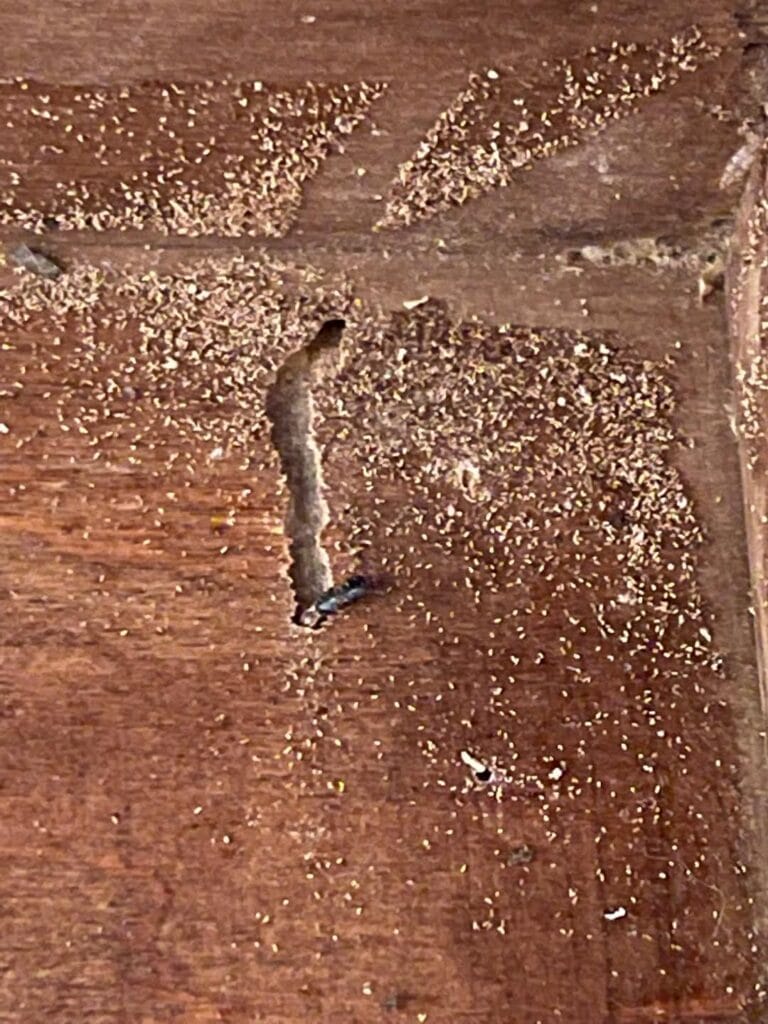
How did you treat the wood?
In order for the insecticide to soak into the wood and treat the beetles that are further inside- you have to strip the finish and get the pieces to bare wood.
After doing that- we painted the Bora Care all over- drawers, drawer bottoms, shelves, top, bottom – Everywhere. It dried a tad sticky but was easily cleaned up with a wipe down afterwards.
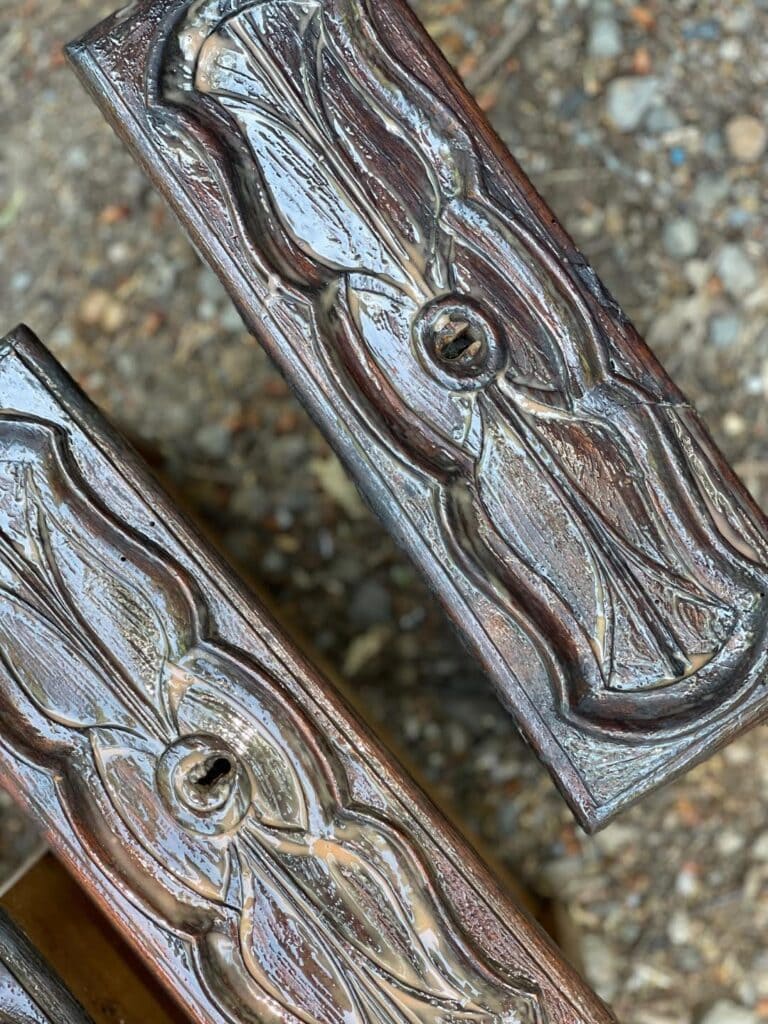
How did you strip the pieces?
We used Citri-Strip. We first applied it all over the wood and let it sit for a bit- and then wiped, scraped, scrubbed etc. to get the finish off. In some areas- we could tell that they had refinished the wood at some point and we had to apply more of the stripper to get the layers to all come off.
What about on the carvings?
We used tools to get the stripper into and out of the carvings. The mirror was a bit of a challenge- so many details that had to be worked on bit by bit. We had a scrub brush- like a toothbrush, a nail end pick and also sponges with the abrasive edges. We went through several of them for each piece.
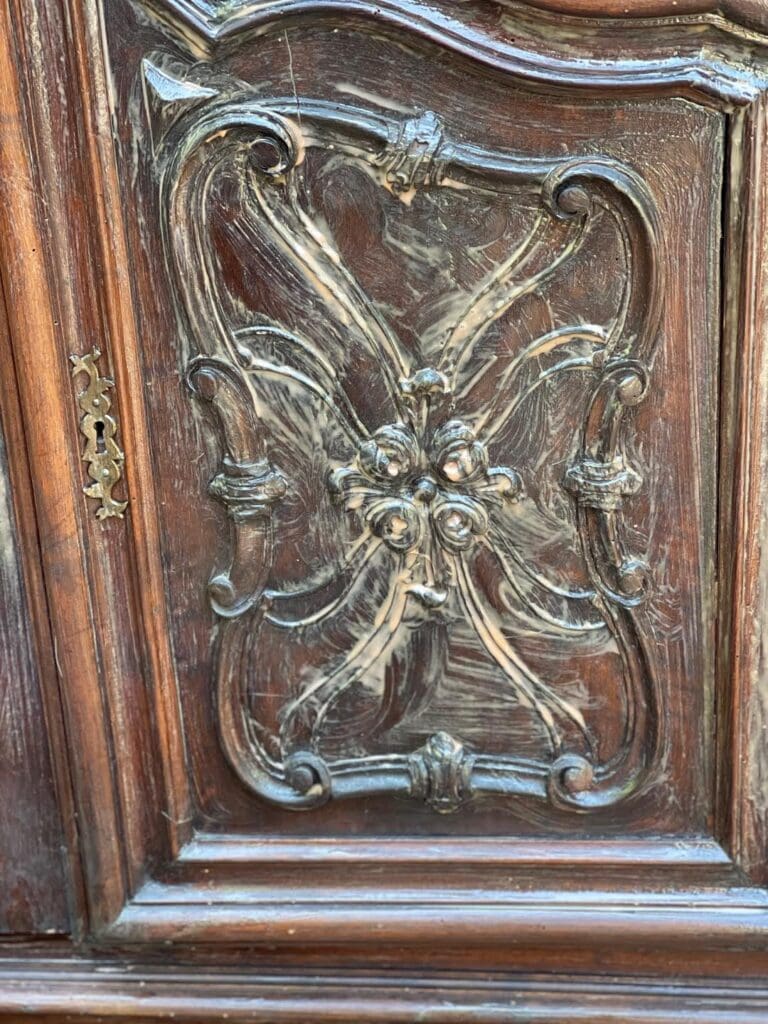
How do you get the wood stripper cleaned off the wood?
Wiping. Wiping. Wiping. Scraping. Scrubbing. We did it all. And we used Ammonia mixed with water to clean the pieces really well afterwards. The ammonia is Not my favorite- I will be honest. It is SO stinky. But it does such an amazing job. And it even took off some of the remnants of the finish in areas. Using ammonia was a tip from my friends at Eloquence- and it worked amazingly well.
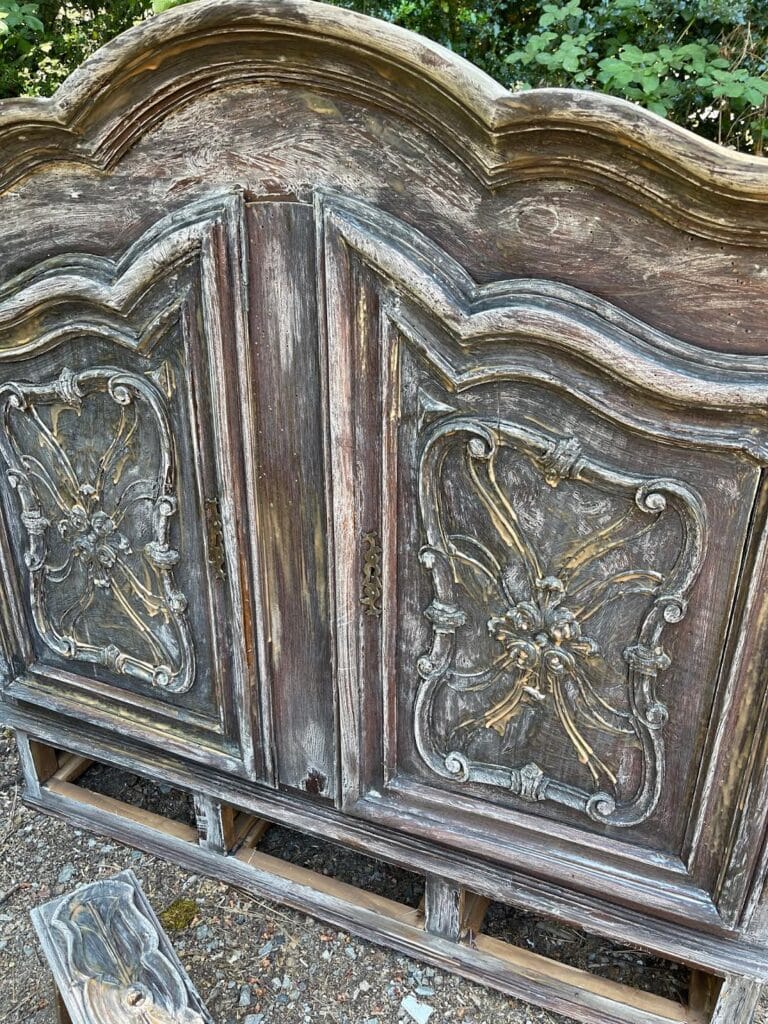
Did you bleach the wood?
We did not. After using the water & ammonia several times – the wood was really stripped nicely and cleaned back to the original look and we were happy with it. Plus, we noticed that all the moisture and treating the wood was starting to show some signs of it being too waterlogged- the drawers were sticking a tad bit from swelling up. So we decided to let it dry out thoroughly and and enjoy it as it is.
Did you use wax? Which one?
Another No. I was originally looking for the perfect wax or oil to seal these- and the closest I came to was the white wax from Jolie. It is gorgeous. BUT before I started to tackle adding wax- I thought about if we had to treat the wood again for some reason (aka those beetles were not actually gone yet) and I didn’t want to have to do the whole process of stripping or removing the finish again. So they are literally wearing a ‘raw, natural’ look right now. You can see the post I did about this White Wax HERE
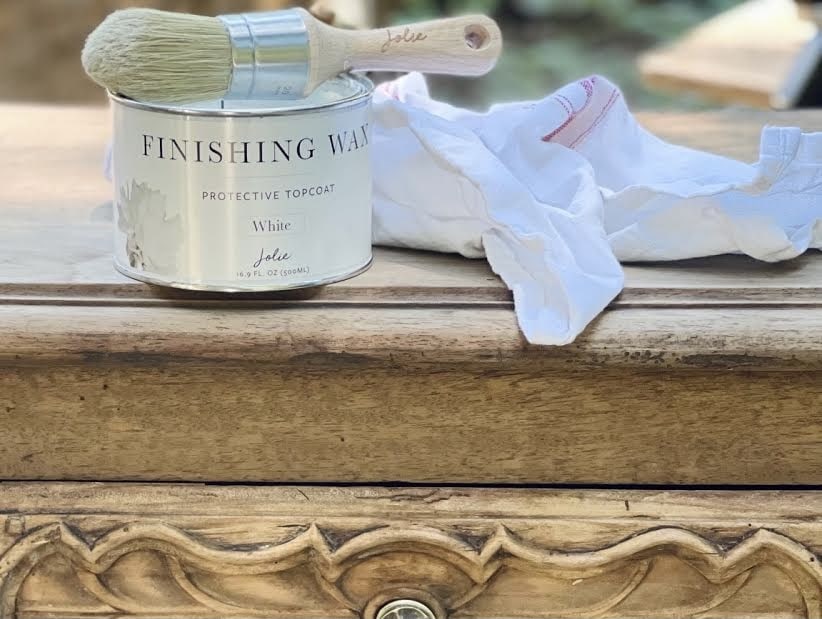
What kind of wood are these? How old are they?
I am not sure of type of wood- Any ideas?
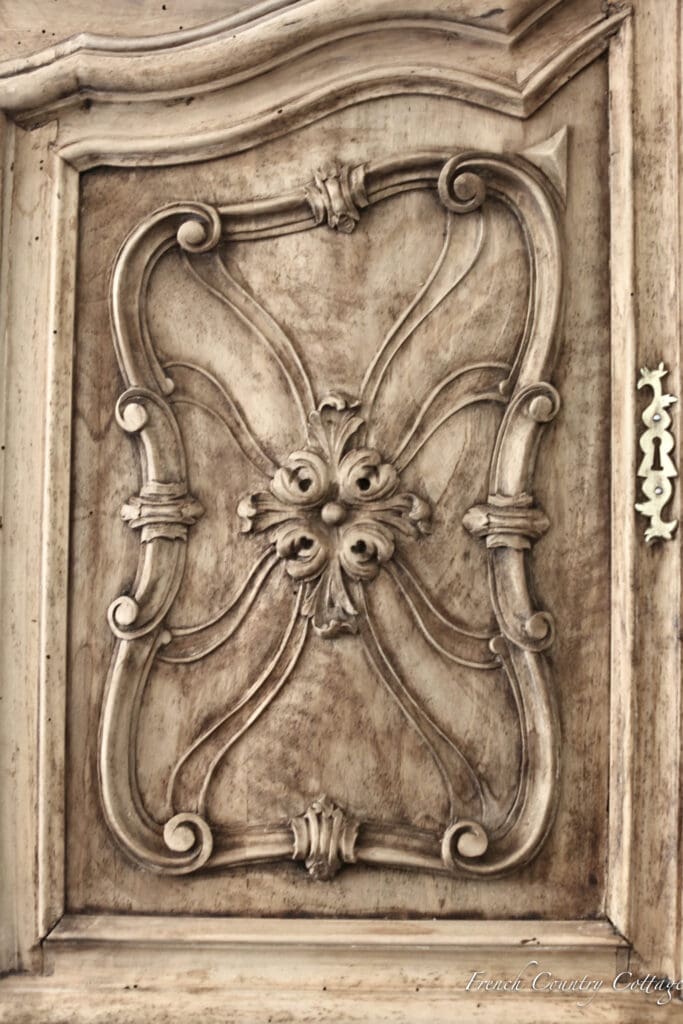
We aren’t sure of the age- from what the seller told us of the history and by researching the drawer construction- thinking maybe late 1700’s but honestly not sure. Would love any info if anyone has knowledge in that area!
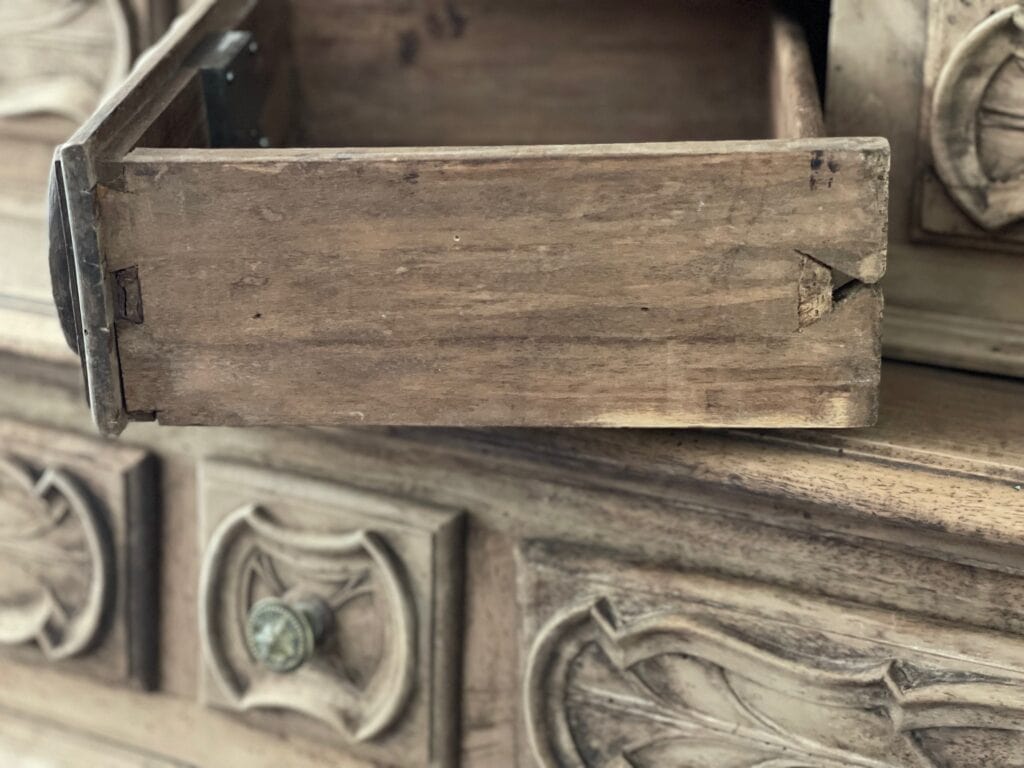
Was there any other damage?
Yes indeed. One of the door hinges came right out of the cupboard- not because the screws were loose- but because the beetles had eaten right through the entire area. It was nothing but sponge wood. We had to fill that with a wood glue and clamp to repair the wood to be able to attach the hinge again. It is never going to be super strong there- but works for display. We also noticed that there were other places where they had replaced different parts- so apparently those beetles have been enjoying these pieces for awhile. The danger with this kind of damage is that the piece is then not structurally sound and that could be a hazard.
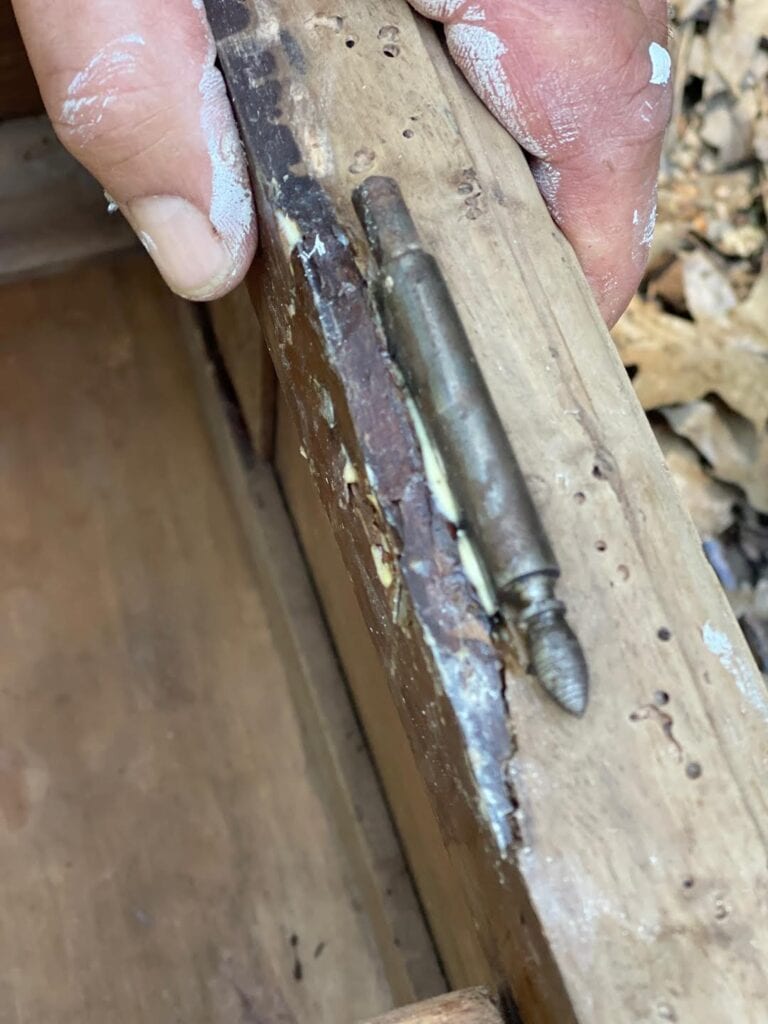
Would you tackle them again?
Because it has now been about a month since we did all that scrubbing- yes. I would. But if you had asked me while we were in process? Not as likely. haha. But- we think they turned out so beautiful- so I think yes- if I found a piece that inspired me- I would probably tackle it. Just look at the difference in the BEFORE to the AFTER.

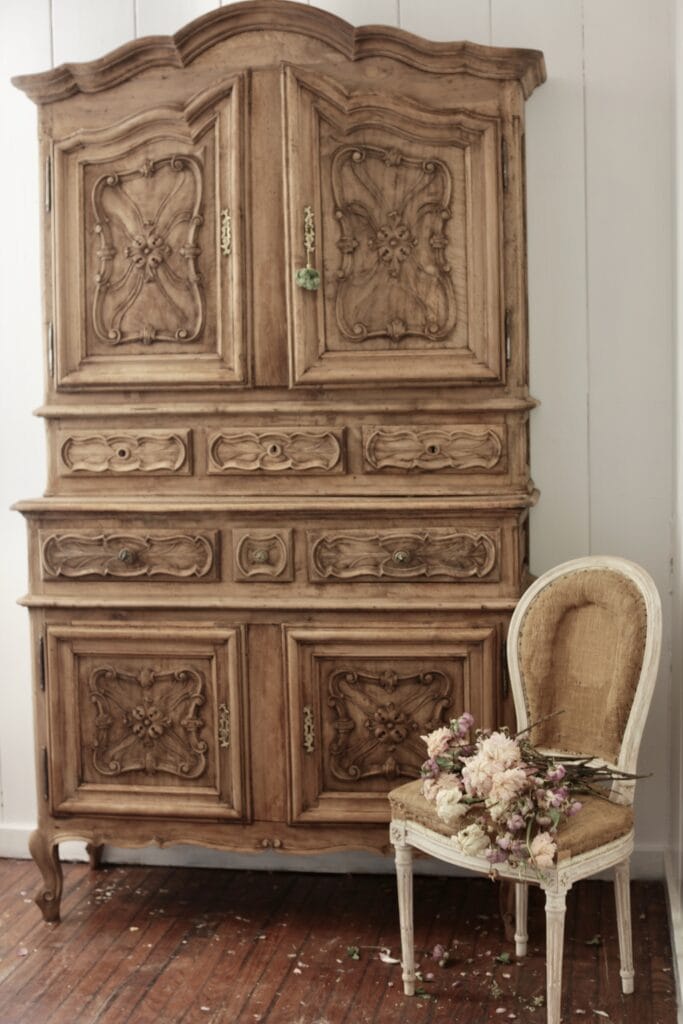

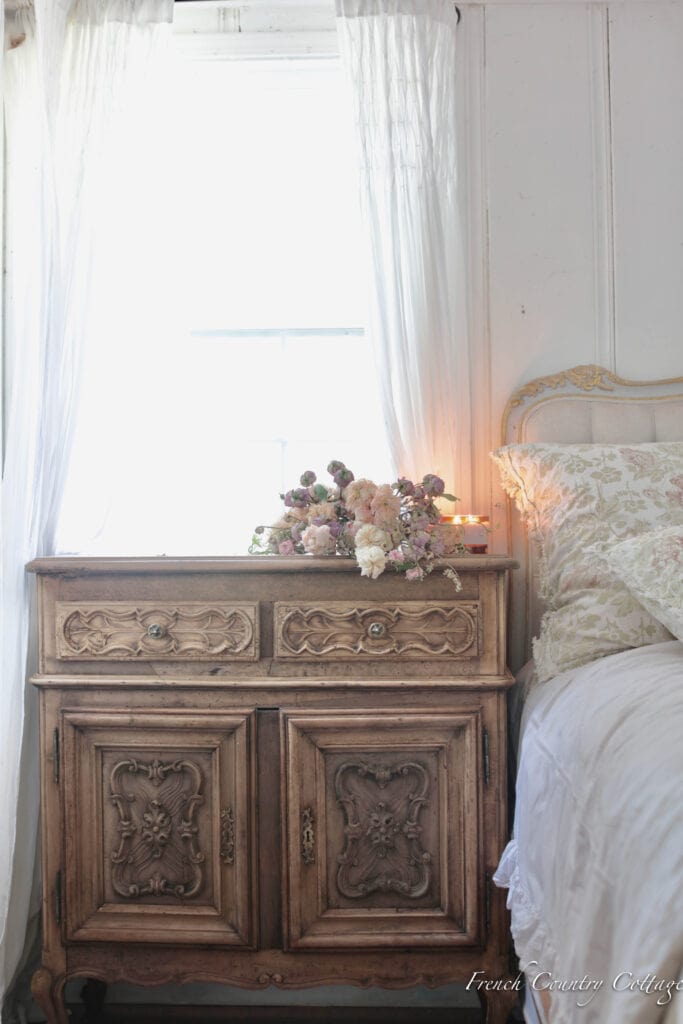
It was far more work than it looks like- in order to get the layers and layers off and then get all the gunk out of the details. Tedious work & a whole lot of shoulders, arms and back extra work. The good news? A few more accentuated muscles in the arms – and beautiful pieces of furniture to enjoy.

Where did you get the pom poms?
They are vintage- attached to the old skeleton keys that we found in the drawers. The drawers and doors has a lock- the keys work for opening and closing.
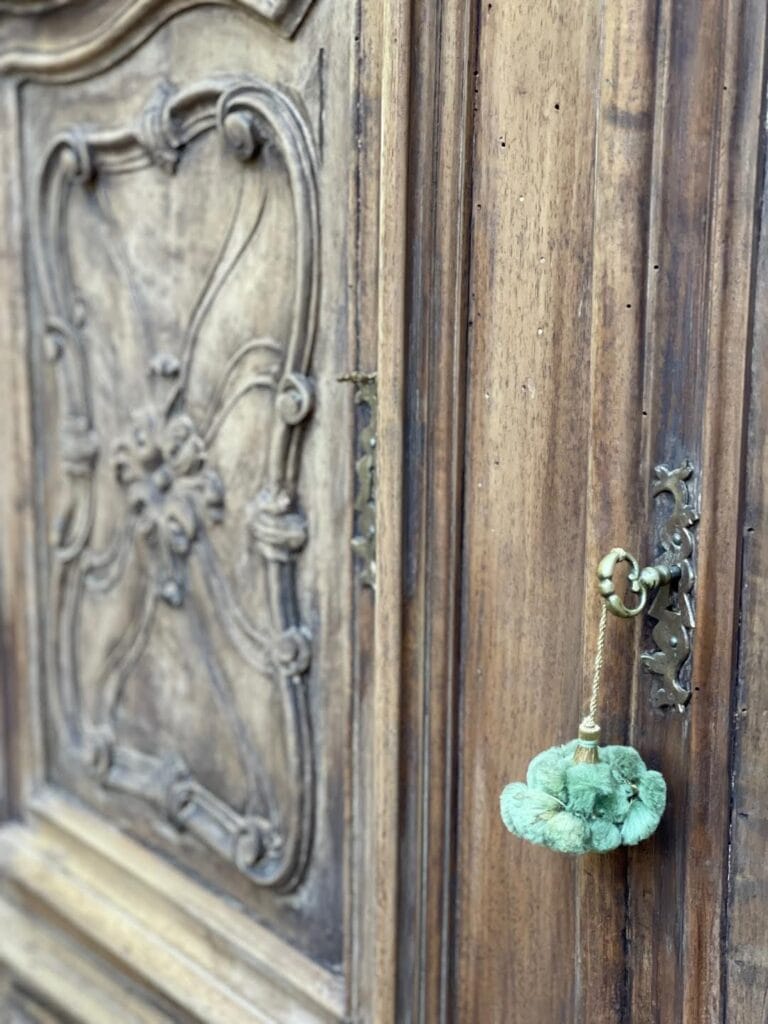
Any tips?
Use gloves, masks and eye protection, And any and all protection that whatever product you use suggests that you do. Always make sure you are outdoors or in a well ventilated area.
In our experience- the Citri strip was not smelly, it didn’t burn our eyes, etc. but we definitely didn’t want that on our skin and didn’t want to be breathing it in. The Bora Care was not smelly either- but again- it is an insecticide- aka a poison- so it is strong. Make sure to protect yourself. And the ammonia- all I can say is oy vey. Follow the precautions on the bottle and make sure to dilute. I had to walk away a couple of times to get fresh air while we were cleaning the pieces with ammonia.
In full disclosure: I am not an expert and this was the first time we have done this. I just followed the directions on the product bottles and what I was told to do- so please make sure to always read the labels and take precautions to protect yourself as directed.
Make sure to have all the tools and then some on hand. We went through several scrub pads, sponges, brushes and even steel wool.
What about the Mirror after?
It is coming! 🙂
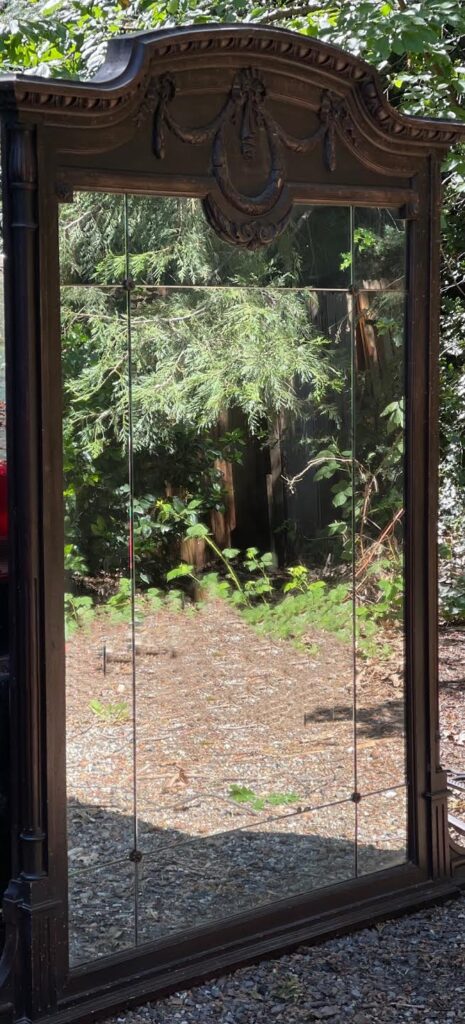
I am photographing it this week to share with you- stay tuned for that coming your way next week!
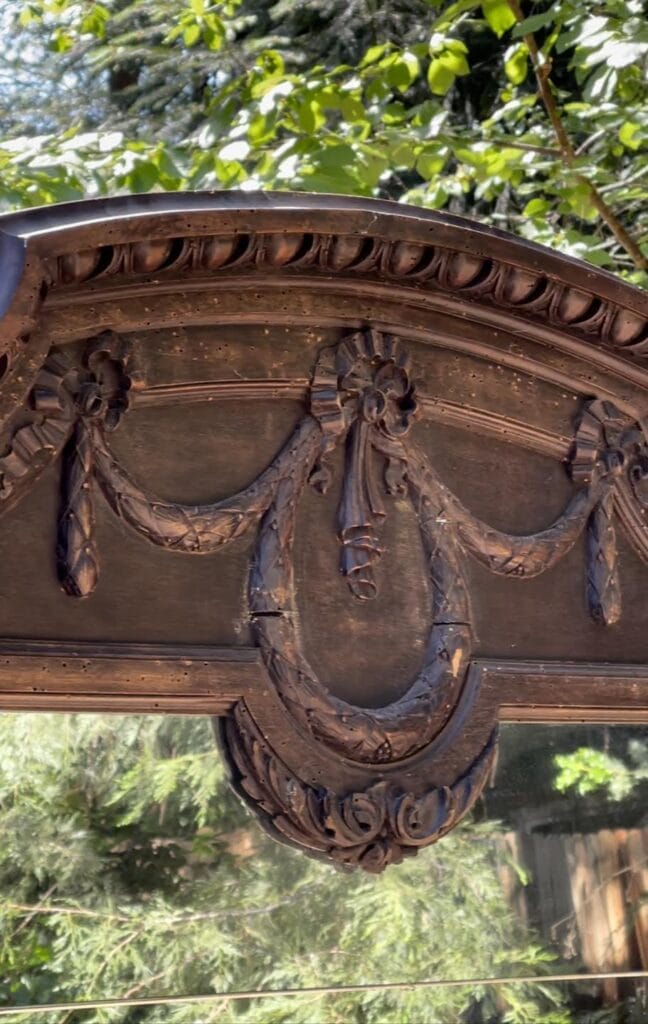
Happy Wednesday all!
*contains some affiliate links
These are absolutely beautiful pieces! Thank you for sharing your journey and providing valuable information.
WOW! these pieces are amazing and they look fabulous with all of your tender loving care.
absolutely love this – thanks for sharing the details and the pictures
I’m inspired to do this to our old bedroom set!
Beautiful. Curious. Do many or most of the beetles remain inside the piece to die
Did you clean the inside and back of the furniture? We bought a French late 1800’s armoire with worm holes. We don’t really see any activity, but I’m planning on using it in our bedroom for the TV and with baskets holding clothing. Did the smell from cleaning disipate??
We did clean inside and outside-including doors, shelves, bottom, etc- basically everywhere. The ammonia smell was only bad while we were using it and cleaning. They don’t have any lingering smells or anything.
Thanks for Sharing!
I cant wait to see the mirroR!
May I ask What the Ratio of ammonia to water. Thank you.
a lot of hard work, but beautiful!
Such amazing pieces! Thank you for saving them!!! THey look so much better in the natural wood state. I cannot wait to see the mirror!!!
We had a piece once that had some insect activity and we placed it in a home being tented for termites. We were told it would take care of the problem–and it did! Anyone else ever tried that?
Yes! We also had an ANTIQUE piece of
furniture fumigated in a home That was being Treated for tErmites many years AGO and have never Seen Another signs of beetles AGAIN!
The wood looks like ash wood. Beautiful pieces. I don’t think I could have done all that work….I would pay someone to restore.
Wow, those are ABsolutely amaZing gorgeous pieces. That was a real labour of love( or insanity)😉i agree that they are moslt likely 18th century, and, I’m willing to bet they are from France. All of my relatives in france have at least one armoire like thIs. And of course this is in the Louis style.
Perhaps walnut. The hardware is hand forged. The armoires were gifted from father to daughters fir her dowry. They would hold family Linens, china, and sometimes food. The SMALLER one was a bedside cabinet. A more well do to family likely Had these made. They are then passed down in the family.
Bravo for saving these wonderful historic Pieces!!👏🏻👏🏻👏🏻
These pieces are beautiful. I remember you sharing some of the steps in your stripping these and it looked to be a daunting task. So worth it in the end.
Karen
aBsolutely stunning and worth each and every Sore muscle. So excited to see the fInished mirroR💖
This is gorgeous!
I’ve been working on a China cabinet and I swear, if I would’ve trust my instinct, by just using the citri strip maybe, I would be done by now.
But my husband got me a soda blaster (messy as …) I’m glad to know that this takes time and patience. Thanks for the inspiration.
I paid $1600. for a Louis 16 sideboard knowing it had holes. I was told there were no bugs. A while later i discovered that it was still Infested. I ended up giving it away with full disclosure about the beetles. that was an expensive mistake because i paid $2700 for a new sideboard to put in the same space.